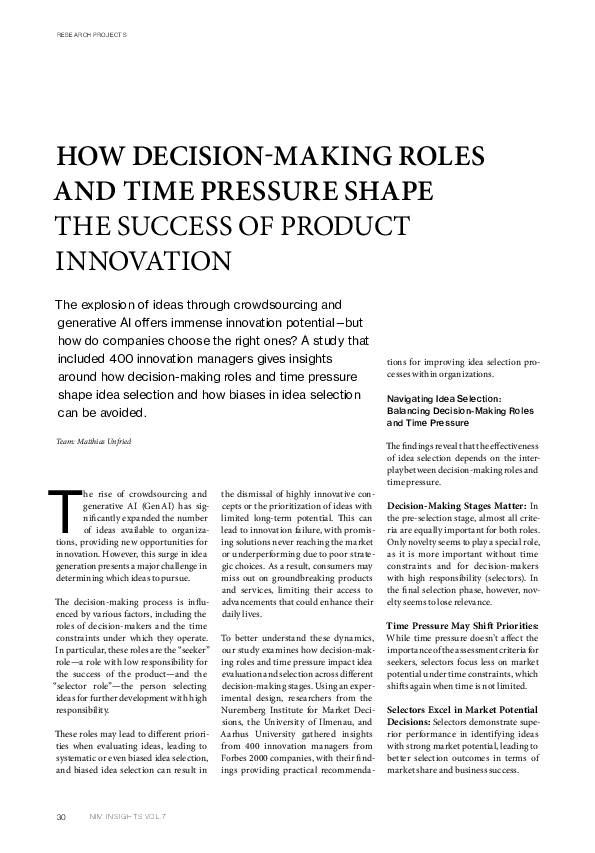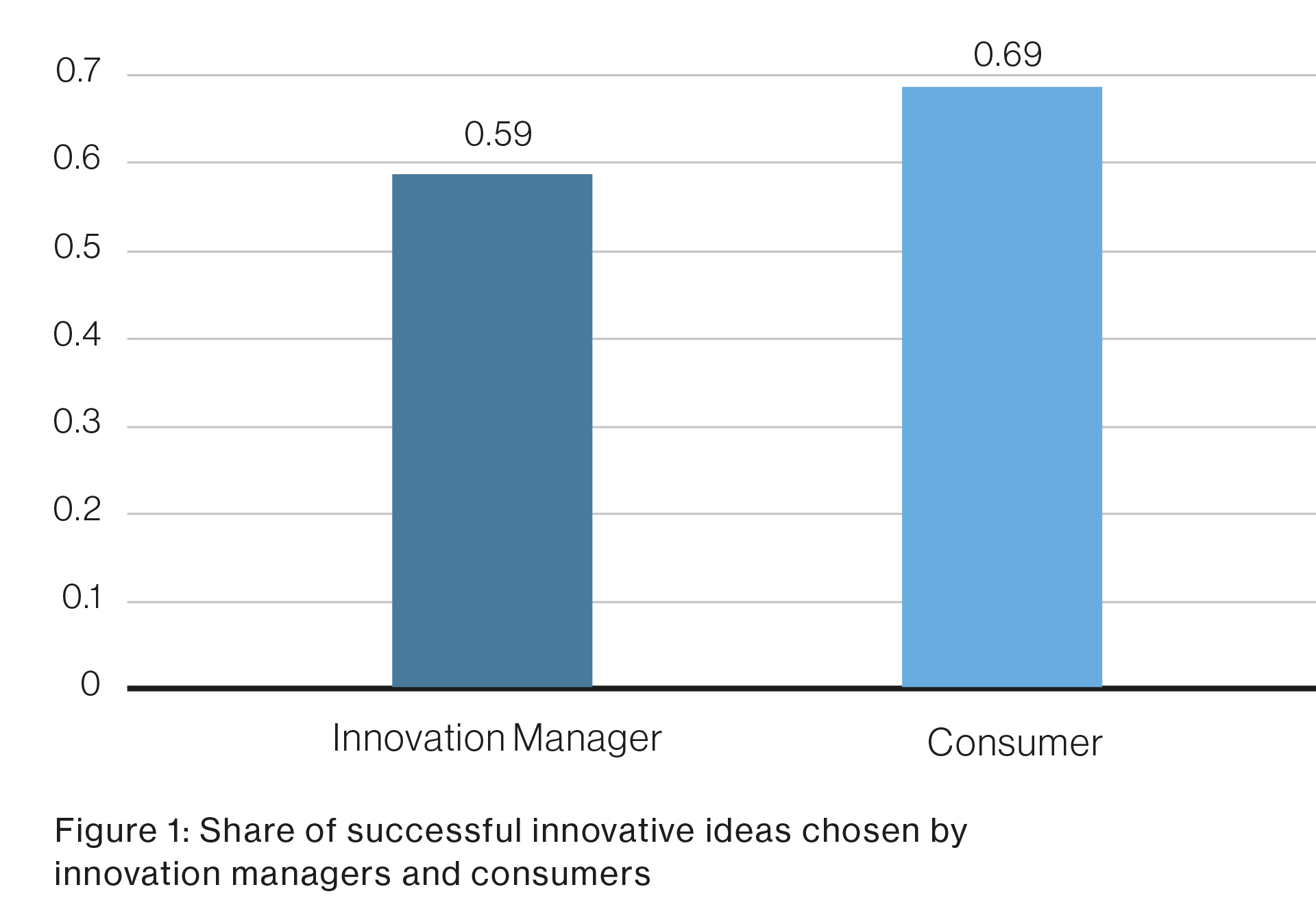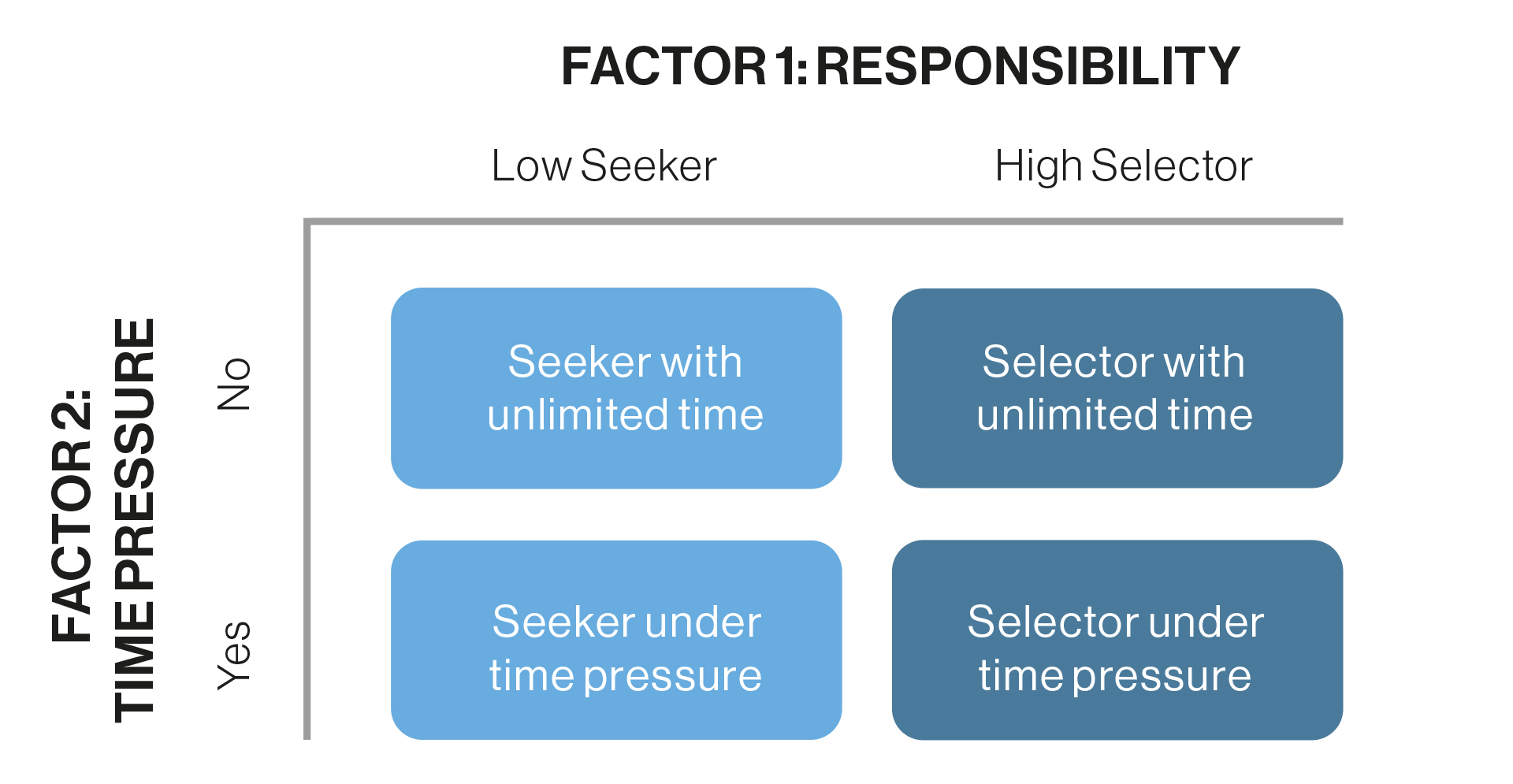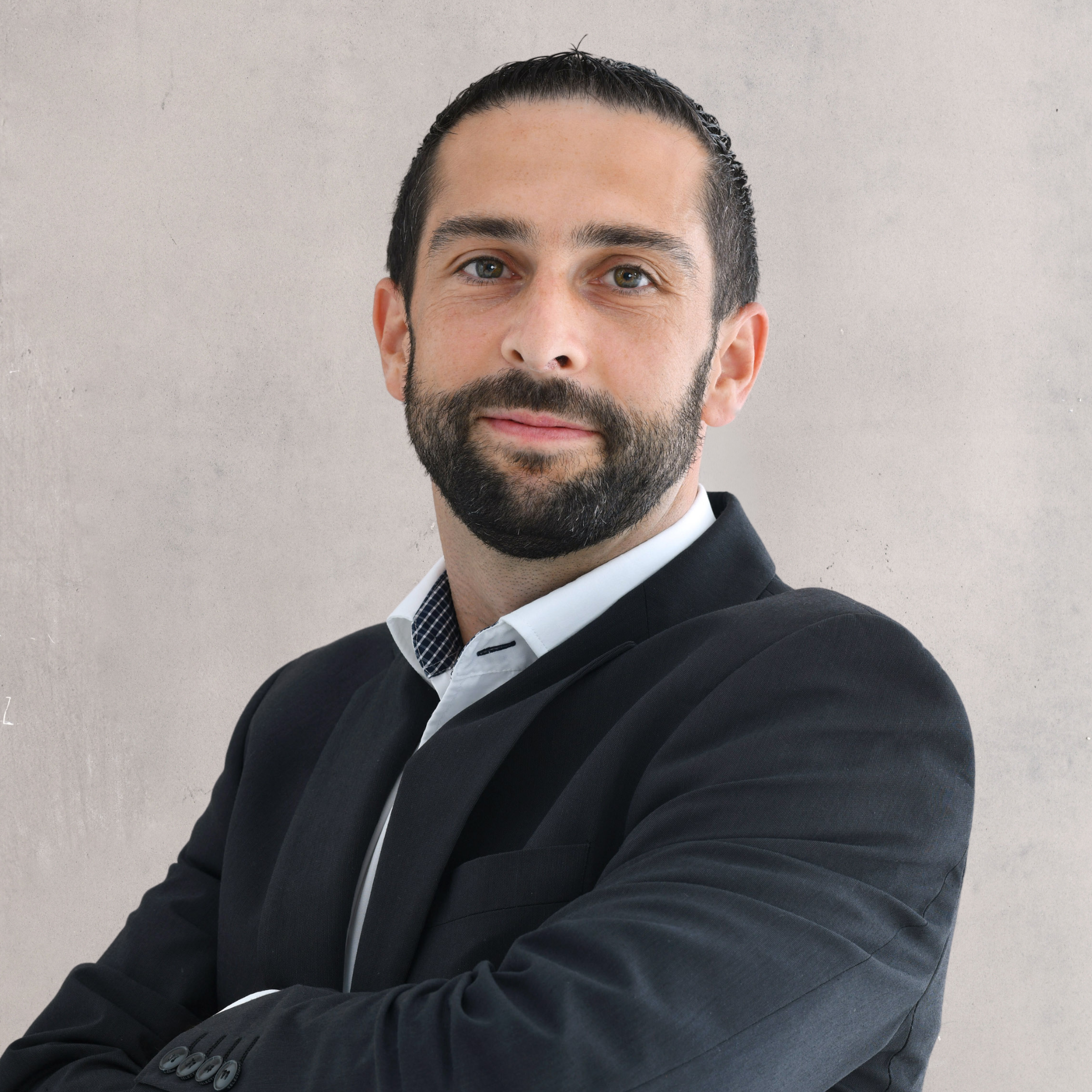Research
How Decision-Making Roles and Time Pressure Shape the Success of Product Innovation
The explosion of ideas through crowdsourcing and generative AI offers immense innovation potential—but how do companies choose the right ones? A study that included 400 innovation managers gives insights around how decision-making roles and time pressure shape idea selection and how biases in idea selection can be avoided.
STUDY DESIGN
For the study, 400 innovation managers from Forbes 2000 companies were recruited and asked to evaluate a variety of crowd-sourced ideas submitted for a fictional company’s crowdsourcing competition. In this setting, the project team manipulated the level of responsibility by priming the decision-making role (high responsibility for “selectors” / low responsibility for “seekers”) and the time allotted to complete the tasks (no pressure / time pressure). Respondents were asked to evaluate the concept’s novelty, feasibility, and market potential as well as how likely they would be to select the idea. After evaluating all ideas, participants had to make a final choice among three options.
The ideas were collected from Kickstarter, one of the most popular reward-based crowdfunding platforms. As the ideas were collected in May 2023, the success or failure of the projects could then be observed. For benchmarking the final choice of the innovation managers, the study was replicated with 200 consumers recruited on prolific.com, with these consumers making the same evaluations and choices.
The rise of crowdsourcing and generative AI (GenAI) has significantly expanded the number of ideas available to organizations, providing new opportunities for innovation. However, this surge in idea generation presents a major challenge in determining which ideas to pursue.
The decision-making process is influenced by various factors, including the roles of decision-makers and the time constraints under which they operate. In particular, these roles are the “seeker” role—a role with low responsibility for the success of the product—and the “selector role”—the person selecting ideas for further development with high responsibility.
These roles may lead to different priorities when evaluating ideas, leading to systematic or even biased idea selection, and biased idea selection can result in the dismissal of highly innovative concepts or the prioritization of ideas with limited long-term potential. This can lead to innovation failure, with promising solutions never reaching the market or underperforming due to poor strategic choices. As a result, consumers may miss out on groundbreaking products and services, limiting their access to advancements that could enhance their daily lives.
To better understand these dynamics, our study examines how decision-making roles and time pressure impact idea evaluation and selection across different decision-making stages. Using an experimental design, researchers from the Nuremberg Institute for Market Decisions, the University of Ilmenau, and Aarhus University gathered insights from 400 innovation managers from Forbes 2000 companies, with their findings providing practical recommendations for improving idea selection processes within organizations.
Navigating Idea Selection: Balancing Decision-Making Roles and Time Pressure
The findings reveal that the effectiveness of idea selection depends on the interplay between decision-making roles and time pressure.
Decision-Making Stages Matter: In the pre-selection stage, almost all criteria are equally important for both roles. Only novelty seems to play a special role, as it is more important without time constraints and for decision-makers with high responsibility (selectors). In the final selection phase, however, novelty seems to lose relevance.
Time Pressure May Shift Priorities: While time pressure doesn’t affect the importance of the assessment criteria for seekers, selectors focus less on market potential under time constraints, which shifts again when time is not limited.
Selectors Excel in Market Potential Decisions: Selectors demonstrate superior performance in identifying ideas with strong market potential, leading to better selection outcomes in terms of market share and business success.
Innovation Managers Often Demonstrate Biased Decision-Making: Consumers outperform innovation managers when predicting successful innovative ideas. "is likely stems from differing approaches: Innovation managers seem to think as corporate decision-makers, placing too much emphasis on corporate decision criteria and thereby neglecting the consumers’ view.
Organizations can optimize their innovation processes by structuring their decision-making teams strategically, allowing sufficient time for evaluation and integrating decision-support systems. In addition, companies can involve consumers in their innovation process, such as through crowd innovation approaches, to ensure that the consumers’ view is also considered. By applying these insights, companies can enhance their ability to identify and develop successful innovative ideas.
Practical Implications for Organizations
Balance Decision-Making Roles: Structuring innovation teams with both seekers and selectors can help balance the team’s emphasis on novelty and market potential throughout the selection process.
Manage Time Constraints Wisely: Avoid imposing excessive time pressure during idea evaluation, as such pressure influences decision-maker priorities and may lead to missed opportunities for selecting high-potential ideas.
Don’t Forget to Get the Consumers’ View: Implement a culture and methodology that involves consumers in the innovation funnel, as they are the ones who ultimately decide whether products succeed or fail.
Enhance Decision-Support Systems: Implement AI-driven or structured evaluation tools to mitigate cognitive biases and improve objectivity in idea selection.
Promote Training and Awareness: Educate decision-makers about cognitive biases and role-driven evaluation tendencies to improve decision-making quality.
Project team
- Dr. Matthias Unfried, Head of Behavioral Science, NIM, matthias.unfried@nim.org
Cooperation partner
- Lars Frederiksen, Aarhus University
Contact



